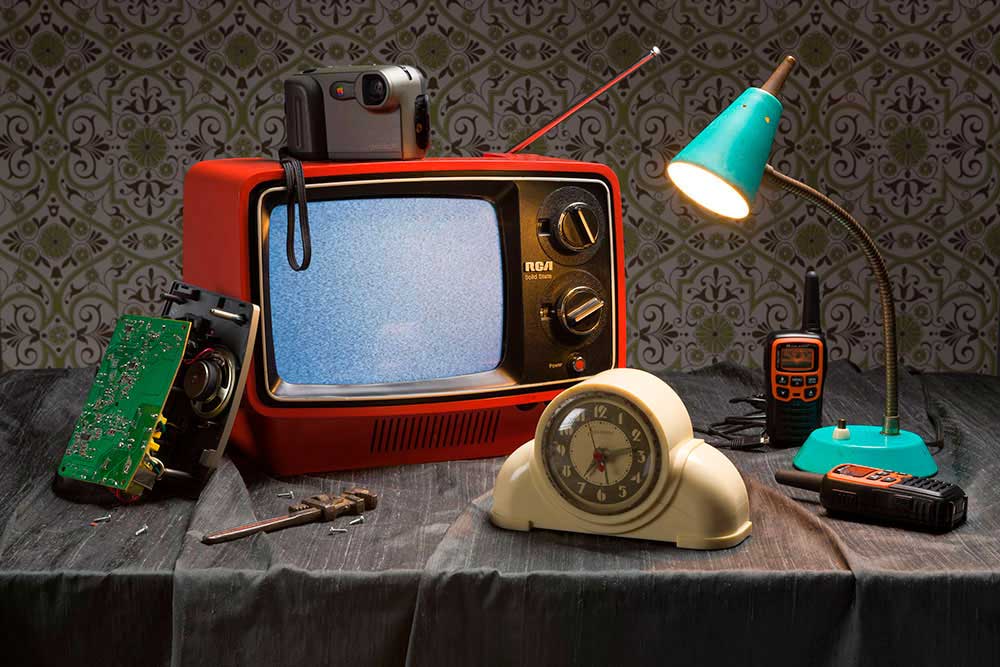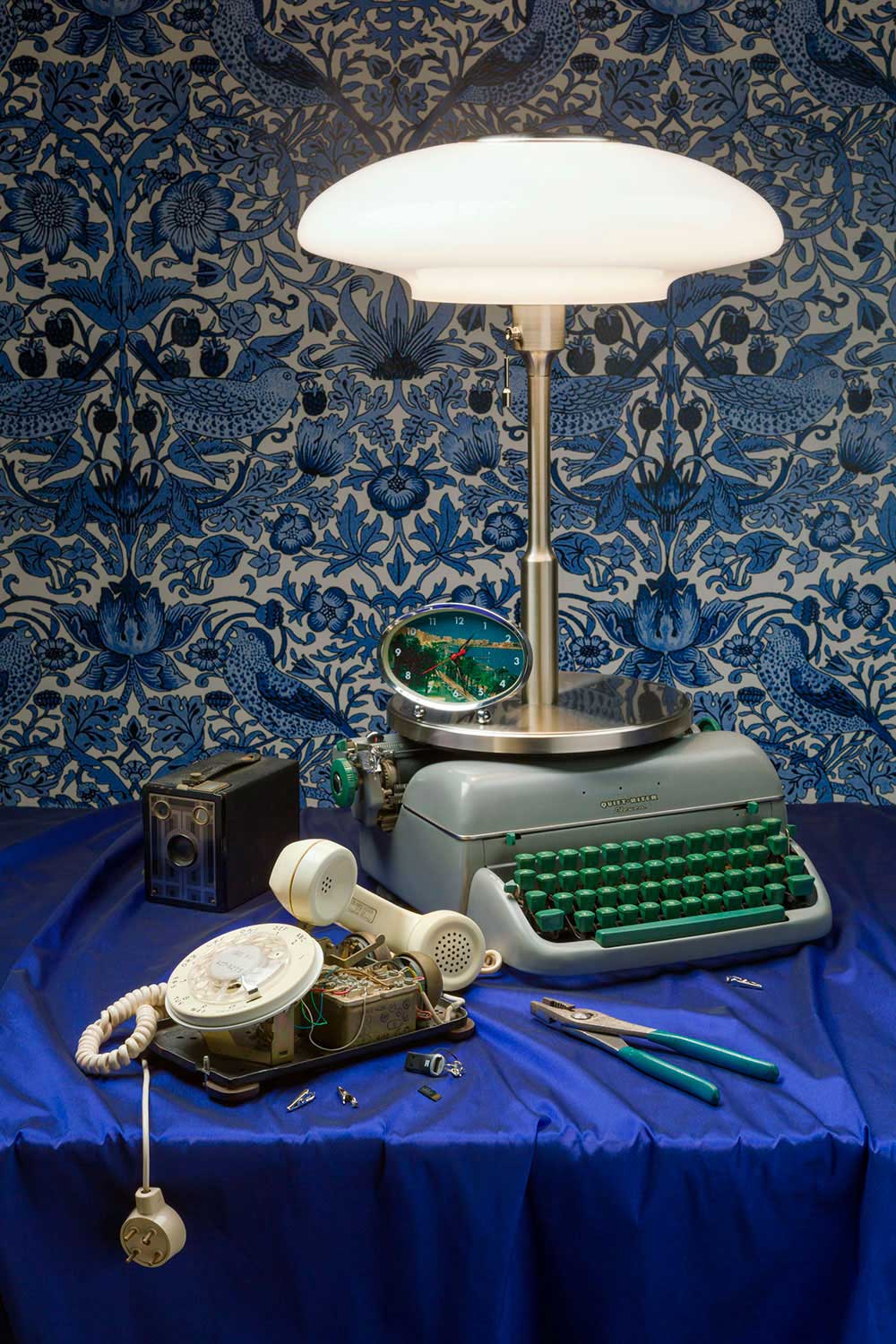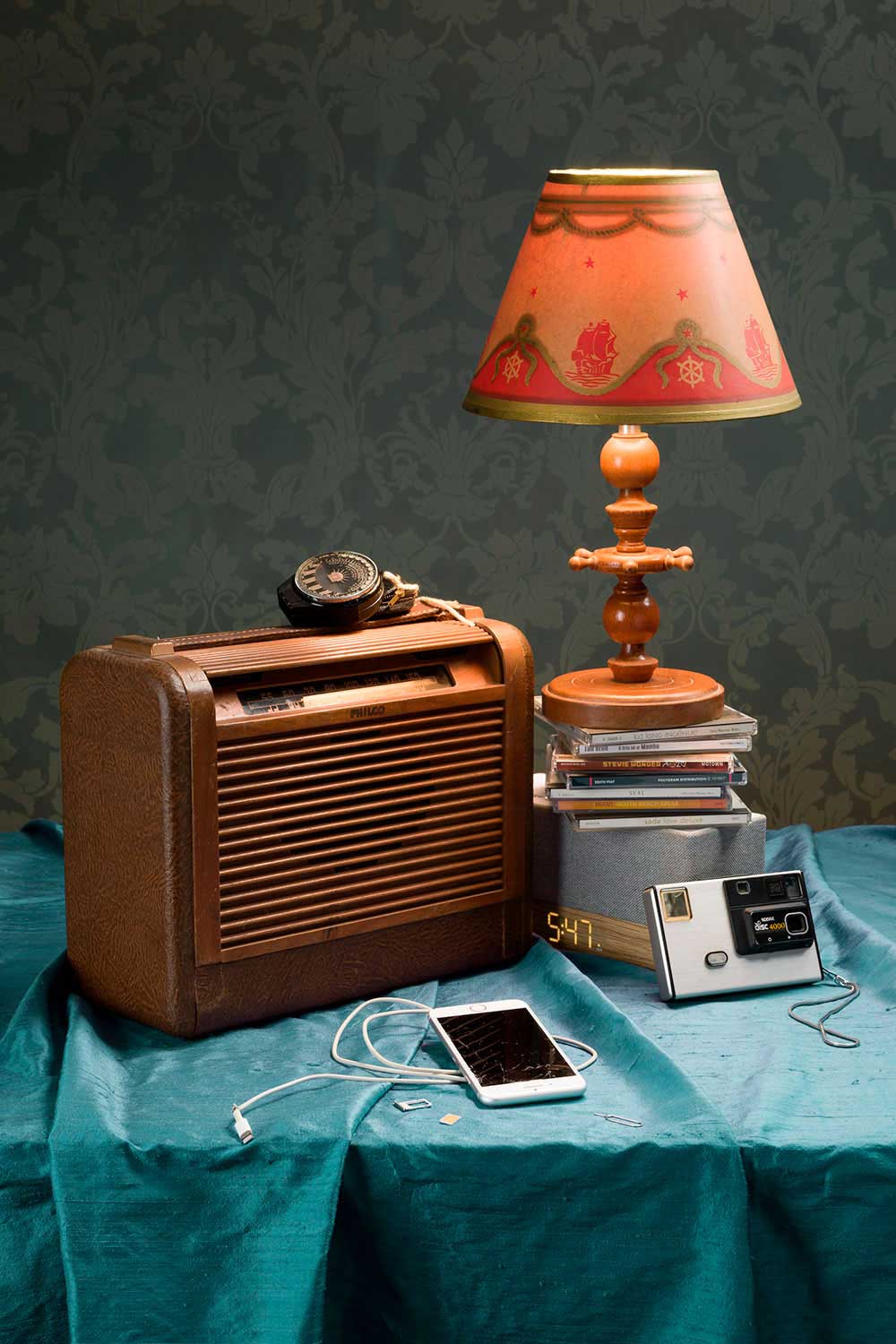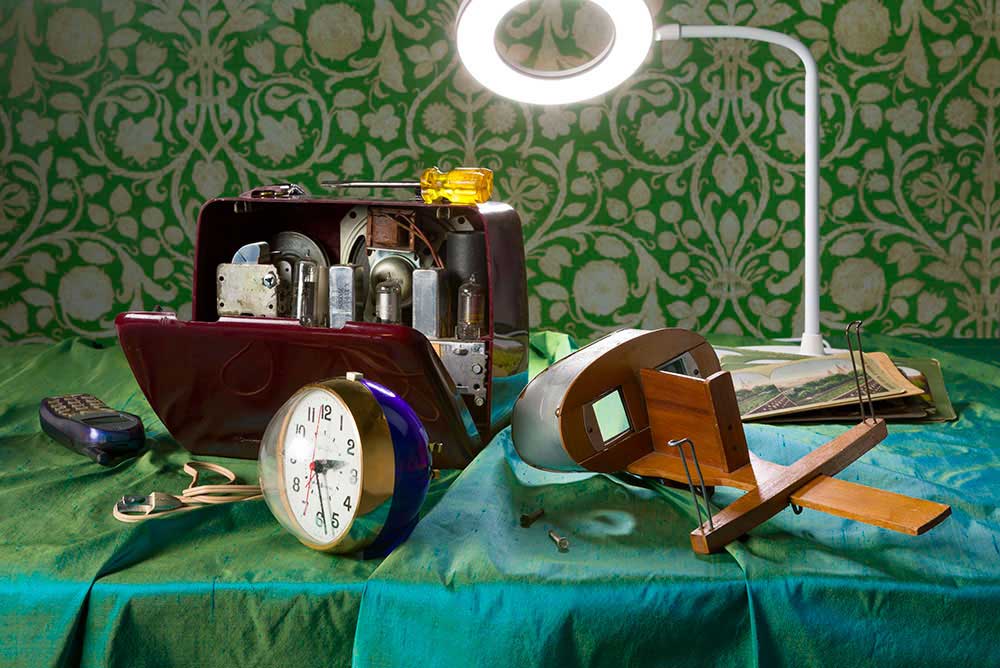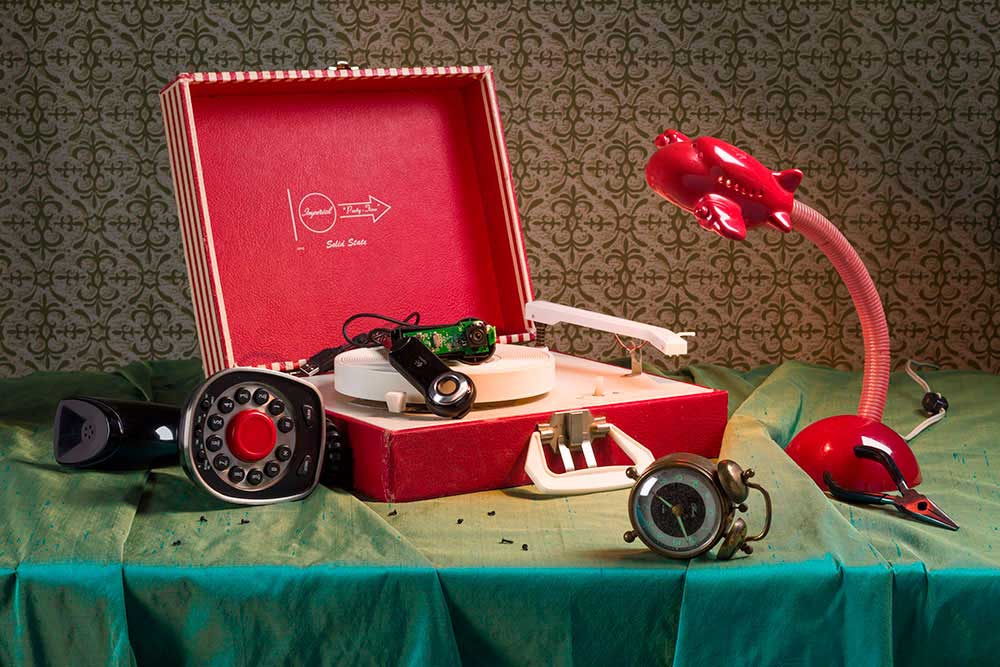Jeanette May’s still lifes reveal our complicated relationship with obsolete technology by juxtaposing the seductive designs and the inner workings of Curious Devices. Her photographs display a reverence for finely crafted merchandise, industrial design, and scientific wonders.
The technological tableaus span antique stereoscopes and art deco clocks to Bluetooth headphones. Each object’s style, color, and construction epitomize a period of both aesthetic and technological advancement. Just as 17th century still life paintings reflect the abundance afforded a prosperous culture, May’s Curious Devices acknowledge the fleeting nature of earthly pleasures.

The original vanitas still life celebrated the new wealth of the Dutch in the 17th century. Their paintings exemplify the advantages of fortune and international trade: silk fabrics, porcelain dishes, Venetian glass, silver goblets, and cultivated flowers. By including skulls and references to time, vanitas paintings may also signify the inevitability of death. 21st century still lifes exist in the form of advertising imagery; the newest gadget is carefully styled and photographed to convince potential owners of technological prowess. Perhaps more than death, we fear becoming Luddites.
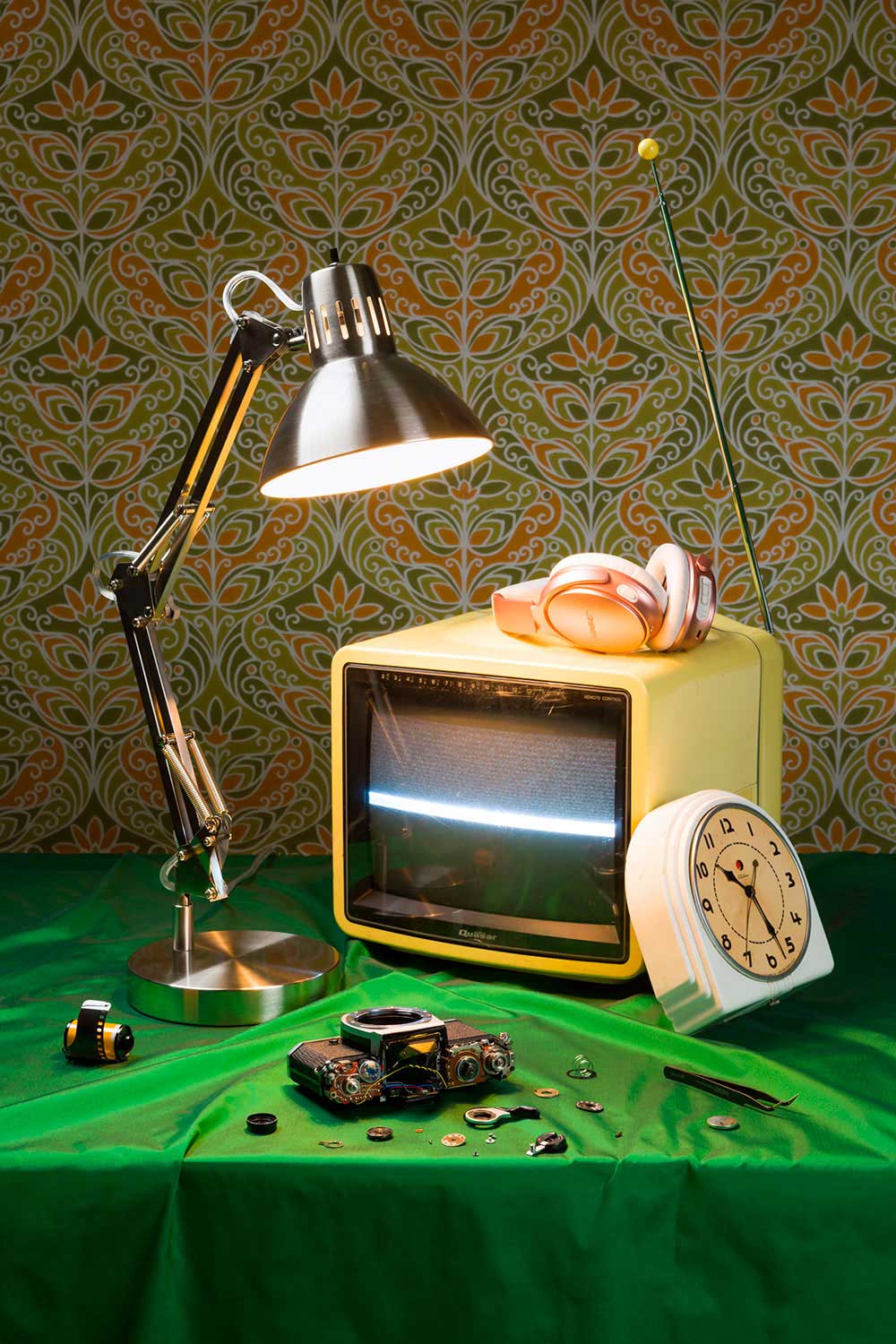
Curious Devices furthers May’s exploration of beautifully designed vintage technology begun in her earlier Tech Vanitas series. Surrounded by rich silks and damask wall coverings, arrangements of domestic wares once again suggest vanitas still life paintings with their air of craft guilds and affluent homes. May’s curiosity leads her to open some of the devices, exposing the archaic gears of movie projectors and the enigmatic architecture of circuit boards. Other objects are clearly broken and in desperate need of repair. What becomes of the beloved tech that stops working or can’t be updated? Adding screw drivers and other tools underscores our desire to revive the damaged or deceased, as well as a culture of designed obsolescence.
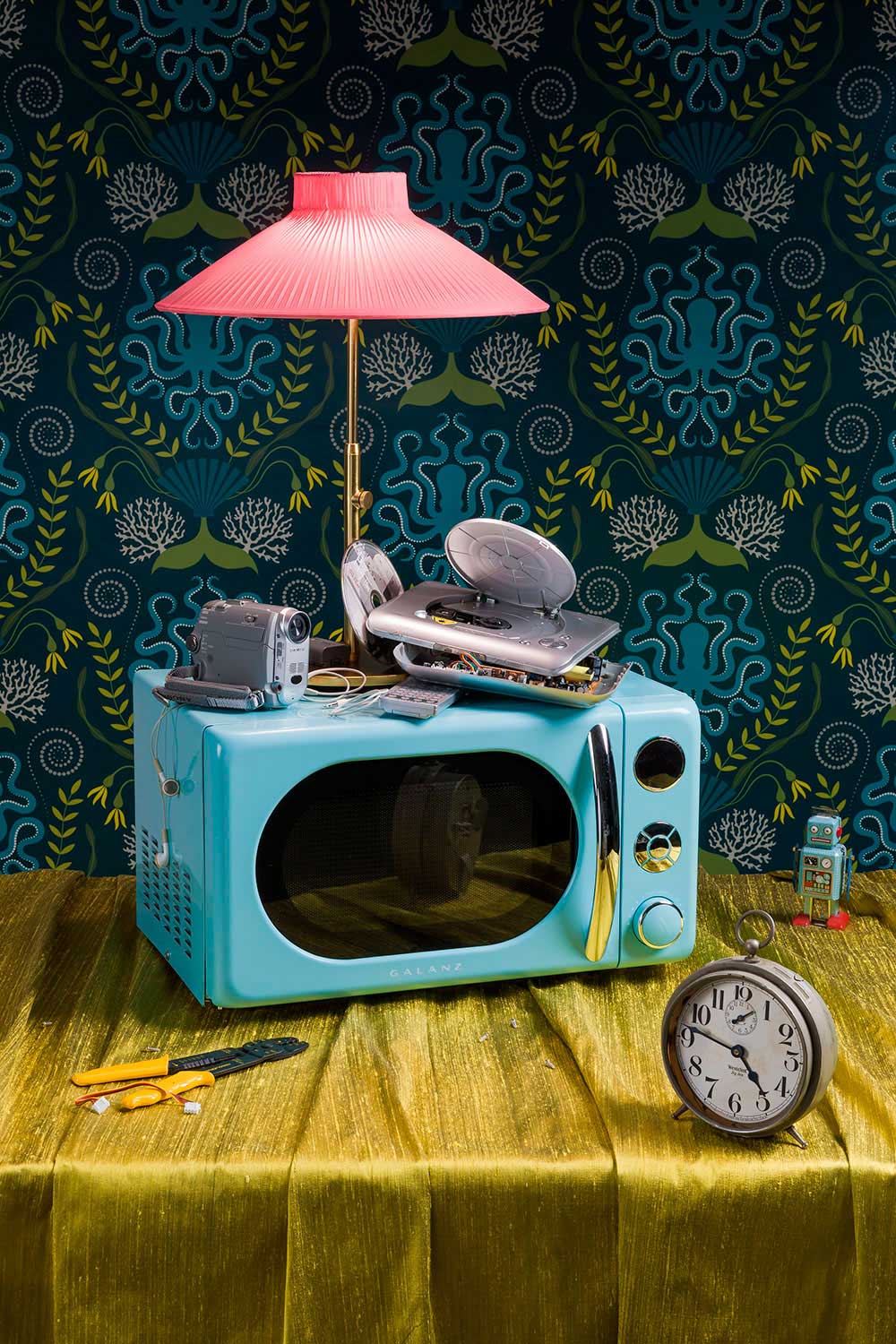
May creates her still lifes by sourcing commonplace technology from recycling centers, flea markets, collectors, friends, and electronics stores. Each photograph includes at least one example of optics, audio, communications, lighting, and time—fundamental technologies undergoing rapid change in contemporary culture. In May’s photographs, time is indicated by an assortment of new and vintage clocks, which also references the hourglass and skull found in vanitas paintings. Electronic light is both a relatively new technology and evidence of a human presence in these illuminated scenes.
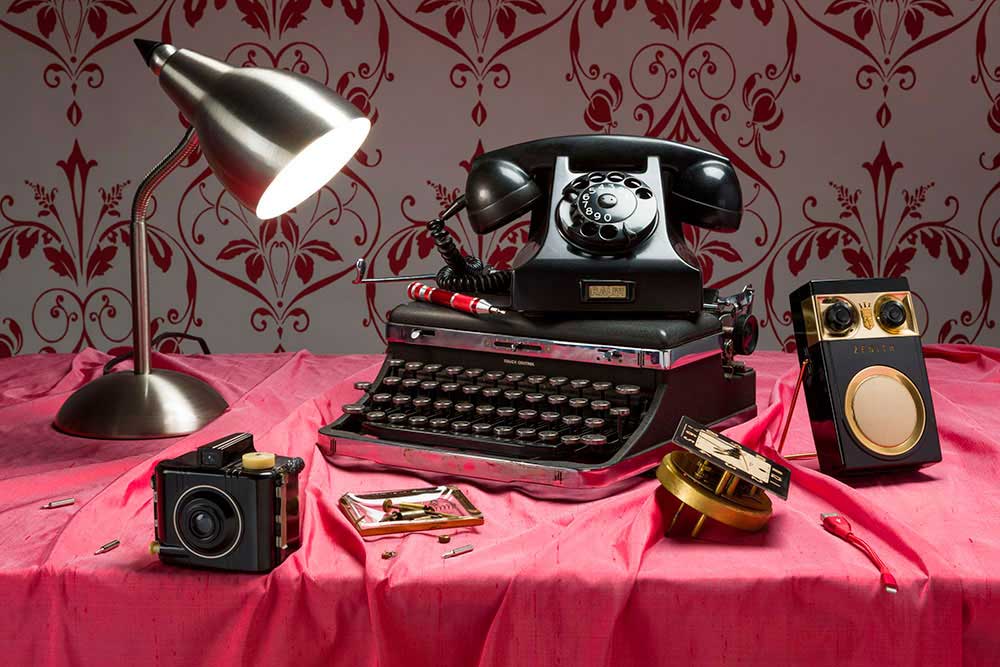
In an era overflowing with manufactured products, the temptation of worldly goods takes on new meaning. Also, how do we regard Dutch opulence built from slavery and exploitation, and under what conditions has our own collection of gadgets been assembled? Curious Devices examines the present and the past of technology without easy answers but rather, like the Dutch vanitas painting, with a sense of wonder and trepidation.
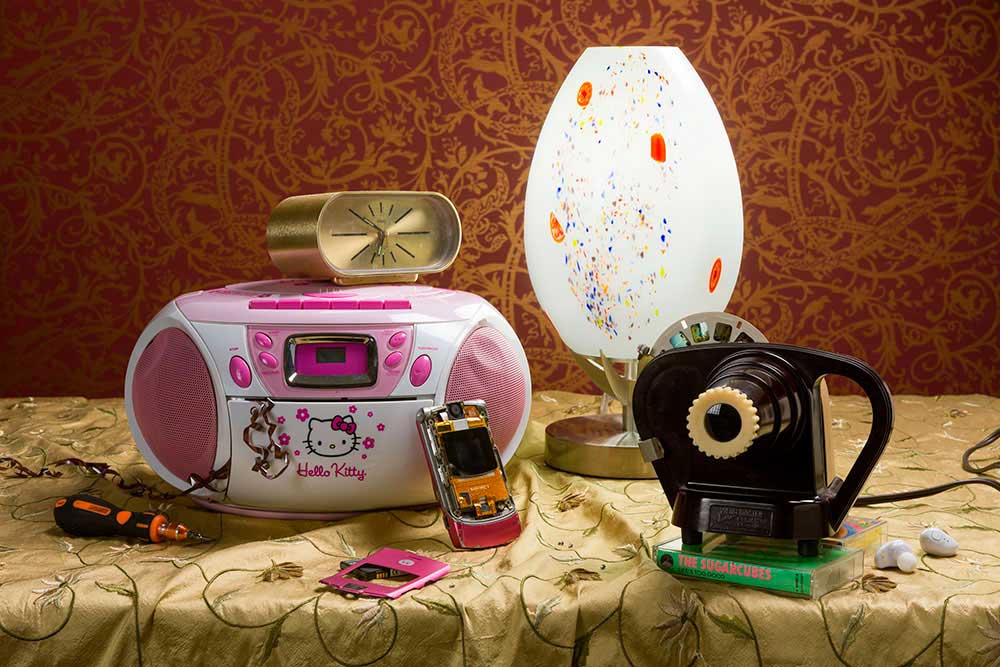
About Jeanette May
Jeanette May is a photo-based artist using a critical, sometimes playful, approach to investigate representation. Early training as a painter is evident in her carefully arranged compositions and rich color palette. May’s photographs are constructed, staged, lit, and carefully considered. Her recent still life projects embrace technology, design, and obsolescence. May received her MFA in Photography from CalArts and her BFA in Painting from the University of Illinois, Urbana-Champaign. She has been awarded grants, fellowships, and residencies from the NEA Regional Artists’ Projects Fund, Brooklyn Arts Council, New York City Department of Cultural Affairs, Illinois Arts Council, Chicago Department of Cultural Affairs, Elizabeth Foundation for the Arts, and Ms. Foundation. Her work is exhibited in galleries and museums internationally, including New York City, Chicago, Los Angeles, Toronto, Milan, Athens, Barcelona, and Shanghai. May lives and works in Brooklyn, NY. Her photography is represented by Klompching Gallery in New York. [Official Website]
